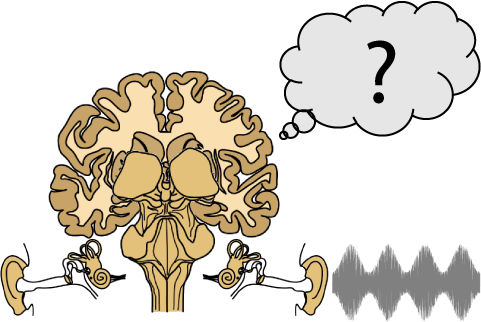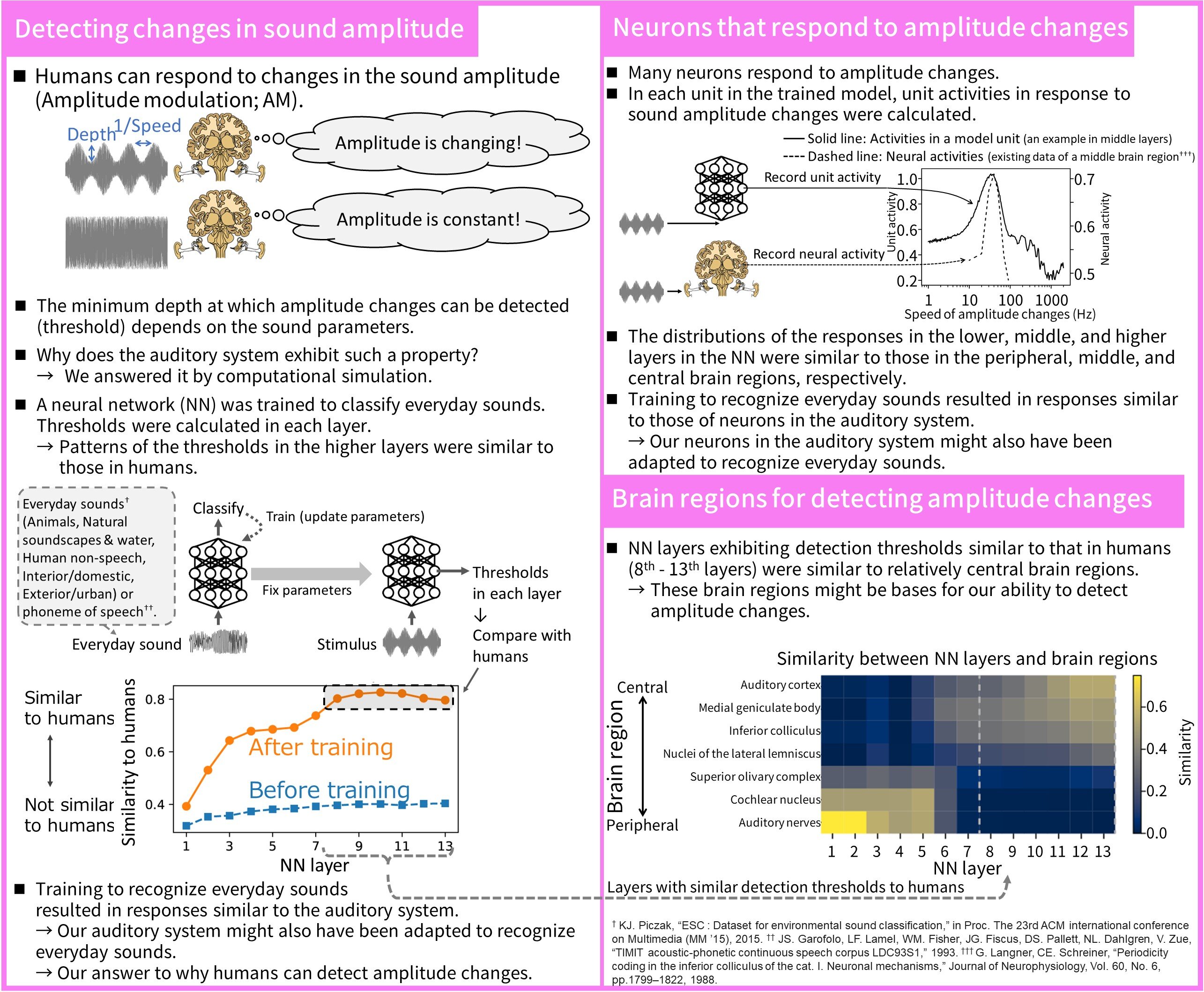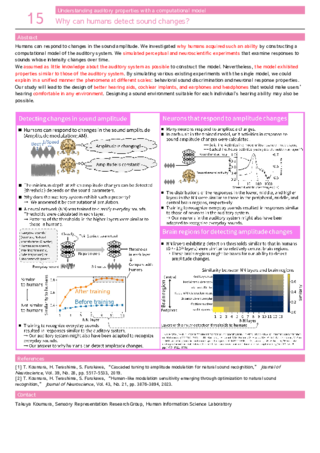| 15 |
Why can humans detect sound changes?Understanding auditory properties with a computational model 
|
|---|
Humans can respond to changes in the sound amplitude. We investigated why humans acquired such an ability by constructing a computational model of the auditory system. We simulated perceptual and neuroscientific experiments that examine responses to sounds whose intensity changes over time.
We assumed as little knowledge about the auditory system as possible to construct the model. Nevertheless, the model exhibited properties similar to those of the auditory system. By simulating various existing experiments with the single model, we could explain in a unified manner the phenomena at different scales: behavioral sound discrimination and neuronal response properties.
Our study will lead to the design of better hearing aids, cochlear implants, and earphones and headphones that would make users’ hearing comfortable in any environment. Designing a sound environment suitable for each individual's hearing ability may also be possible.

[1] T. Koumura, H. Terashima, S. Furukawa, “Cascaded tuning to amplitude modulation for natural sound recognition,” Journal of Neuroscience, Vol. 39, No. 28, pp. 5517-5533, 2019.
[2] T. Koumura, H. Terashima, S. Furukawa, “Human-like modulation sensitivity emerging through optimization to natural sound recognition,” Journal of Neuroscience, Vol. 43, No. 21, pp. 3876-3894, 2023.
Takuya Koumura, Sensory Representation ResearchGroup, Human Information Science Laboratory




